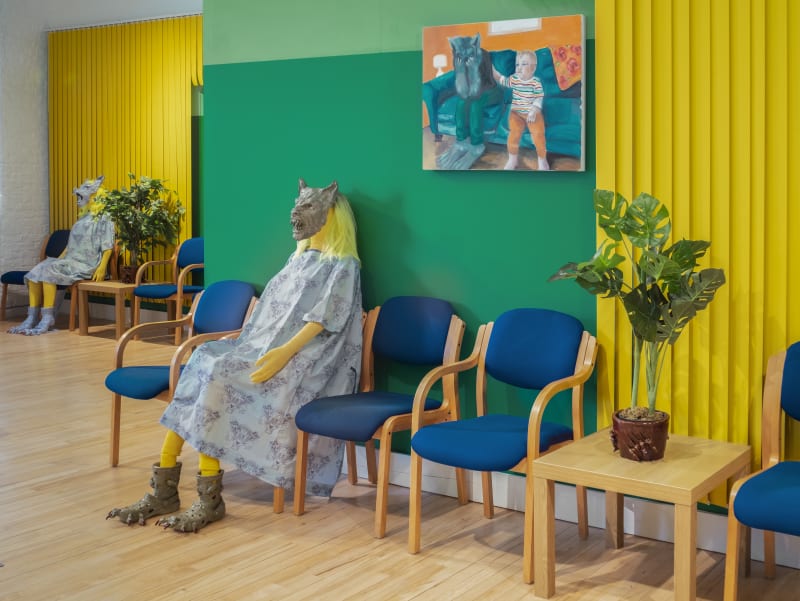Lindsey Mendick’s exhibition “Hairy on the Inside” prompted me to revisit Angela Carter’s so-called wolf trilogy: the final stories in The Bloody Chamber (1979), the British author’s collection of transgressive, feminist revisionist fairy tales. On rereading them, I discovered the genesis of this show’s title in the line “the worst wolves are hairy on the inside,” which appears in Carter’s “The Company of Wolves.” Mendick, who has a similar dexterity in inhabiting the uncanny, uses the werewolf as a cipher for living with polycystic ovary syndrome, which can also cause hirsutism and infertility, a condition she details with vulnerability in an accompanying video made in collaboration with her partner, the artist-filmmaker Guy Oliver.
For the titular 2021 installation, Mendick has re-created a clinical waiting room, complete with fabric visitor seats, cheap vertical blinds, ersatz monstera, and an unkempt children’s play area. On closer inspection, the plant pots are lacerated by teeth and claws, while the facsimile toys (a Fisher Price telephone, Mr. Potato Head, Sylvanian Families) appear decrepit, burnt, mangled. Five figures, their limbs composed of neon gauze bandages, are seated in the space, wearing hospital gowns patterned with a florid abstraction of the female reproductive system with blossoming cysts and tubes extending into talons. The faces of these “patients” are disguised by grimacing, lupine masks, wide expressive mouths exposing sharp fangs, contorted tongues. Paws are stuffed into gelatinous imitation Crocs and Birkenstock sandals, covered in slugs, snails, and insects and exposing gnarled toes with overgrown red lacquered nails. (Mendick has made the pots, toys, masks, and shoes from the same glazed ceramic, as if part of a singular catalogue of surreal products.) In contrast, four oil paintings depict the werewolf as a loving caregiver. “Wolfie” is shown engaging in childcare activities: giving a bath, watching telly, brushing their hair, etc. These tender scenes upturn the dysphoric grotesquerie, creating the type of antispectacle that Carter would file under “the demythologizing business.”

